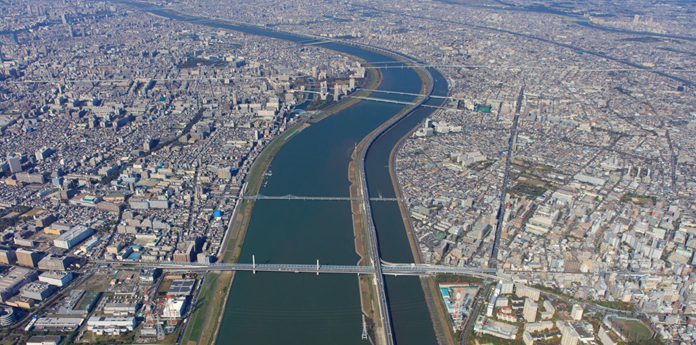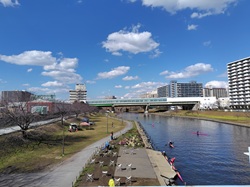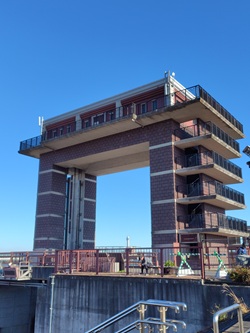
Source:Arakawa-Karyu River Office. Ministry of land, Infrastructure, Transport and Tourism




Source:Arakawa-Karyu River Office. Ministry of land, Infrastructure, Transport and Tourism
A city planning of Edo, now Tokyo, started with constructing a waterway in Koto city about 400years ago. Back then, the area was a vast plain wetland close to the sea. Water transportation played an important role and geared up industry and economy of Edo, a million-people city. In this tour, you will visit Nakagawa Funa-Bansho Museum, the exhibition of Shipping Guard house in Edo period and stroll nearby three different-feature waterways. You can get another perspective over the history of Japan.
Nakagawa Shipping Guard house was built about 400years ago to exercise strict control over boats going in and out Edo through Onagi-gawa River. The house inspected arms traffic strictly to protect Edo and prohibited family members of feudal loads escaping from the town. You can see a diorama of the house and find the industry transition of the waterway area that flourished in the Edo period to the Meiji period. Miniature-wooden rowing boats and an ukiyo-e painted by Utagawa Hiroshige, a popular ukiyo-e artist in Edo period, will delight your eyes. Additionally, the real household goods of an ordinary life in the mid-20th century in the Local history Corner on the second floor will also attract you.


“Onagi-gawa River “is the first man-made waterway built in Tokugawa period to transport salt, which was staple for especially samurai. In the latter Edo period, people visited shrines and temples for pleasure using this waterway. “Nakagawa River” is a natural waterway that had been flowing for two thousand years. Boats transported a wide variety of goods, including rice, sake, soy sauce, from northern prefectures of Edo through this waterway. Now, the river area is a recreational place for fishing, canoeing, walking and used for an amphibious bus tour for tourist. “Arakawa River” is a man- made waterway. It was built 100 years ago to protect people from flood. People had struggled against many floods in the past. The construction took 20 years and 1300 houses were required to move out. Now, disaster relief goods and evacuees will be transported through “Arakawa Rock Gate” in case of emergency. You will be definitely impressed by magnificent view of it.
 |
 |
 |
This tour takes around 90minutes to 120 minutes.
Note:
Nakagawa Funa-Bansho Museum is closed on Monday and temporarily closed for an exhibition change.
Admission fees of 200yen for Adult, 50yen for Child to Nakagawa Funa-Bansho Museum is required.
※A ticket valid for three museums in Koto City of 500yen is recommended.
Ojima exit of Higashi Ojima station(S16) on the Toei Subway Shinjuku line
Note: Not to exit from Komatugawa exit.
Please send us email from this page.